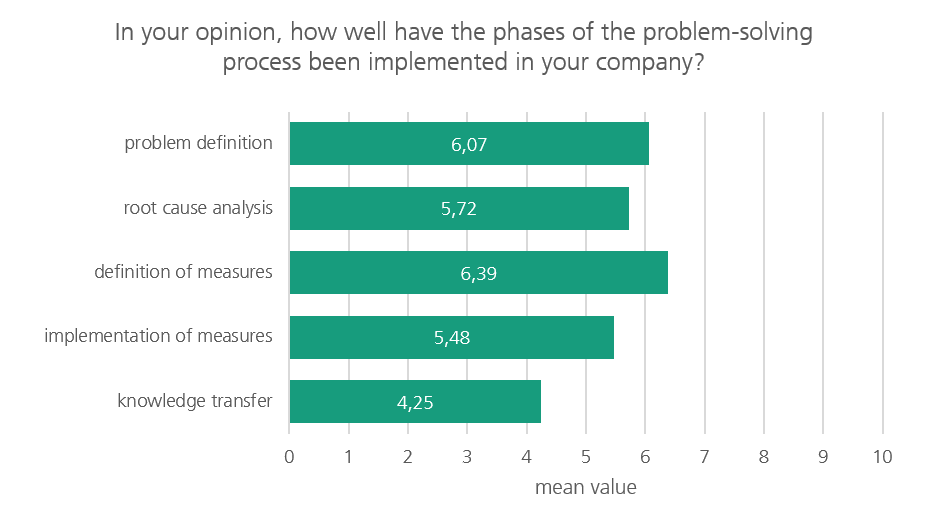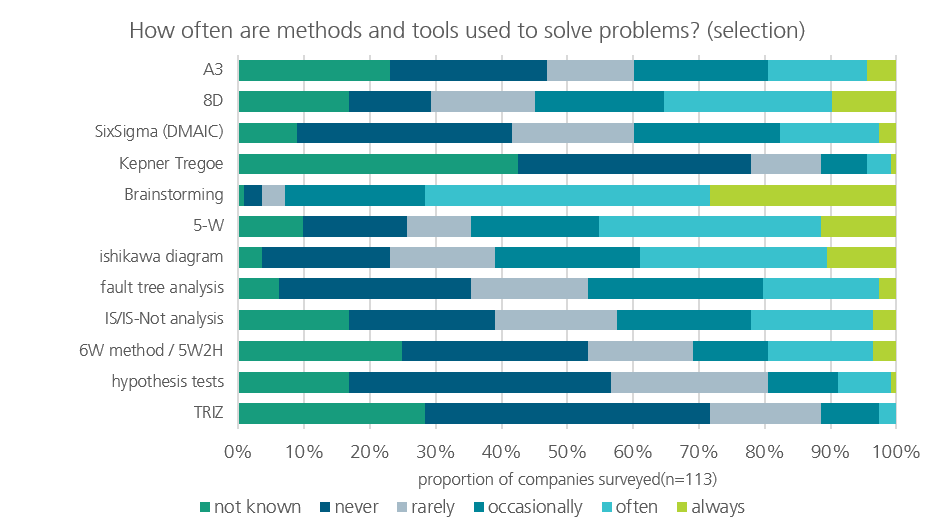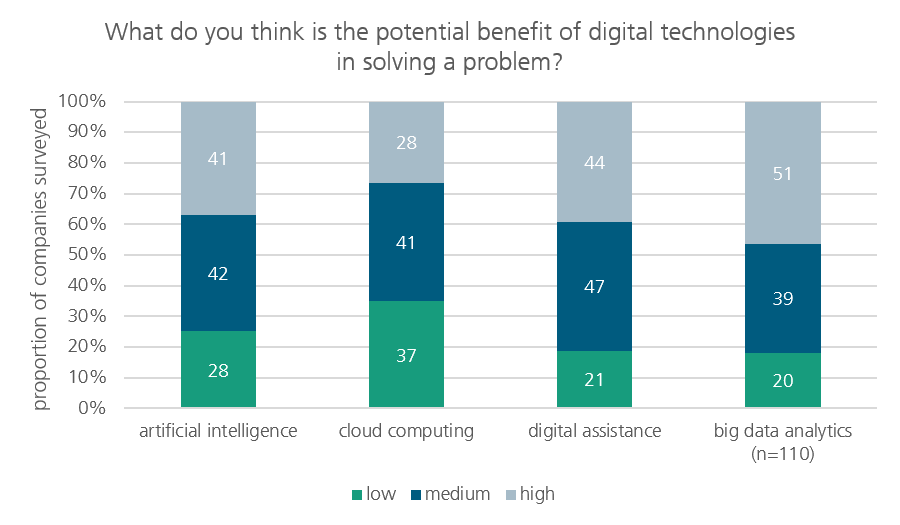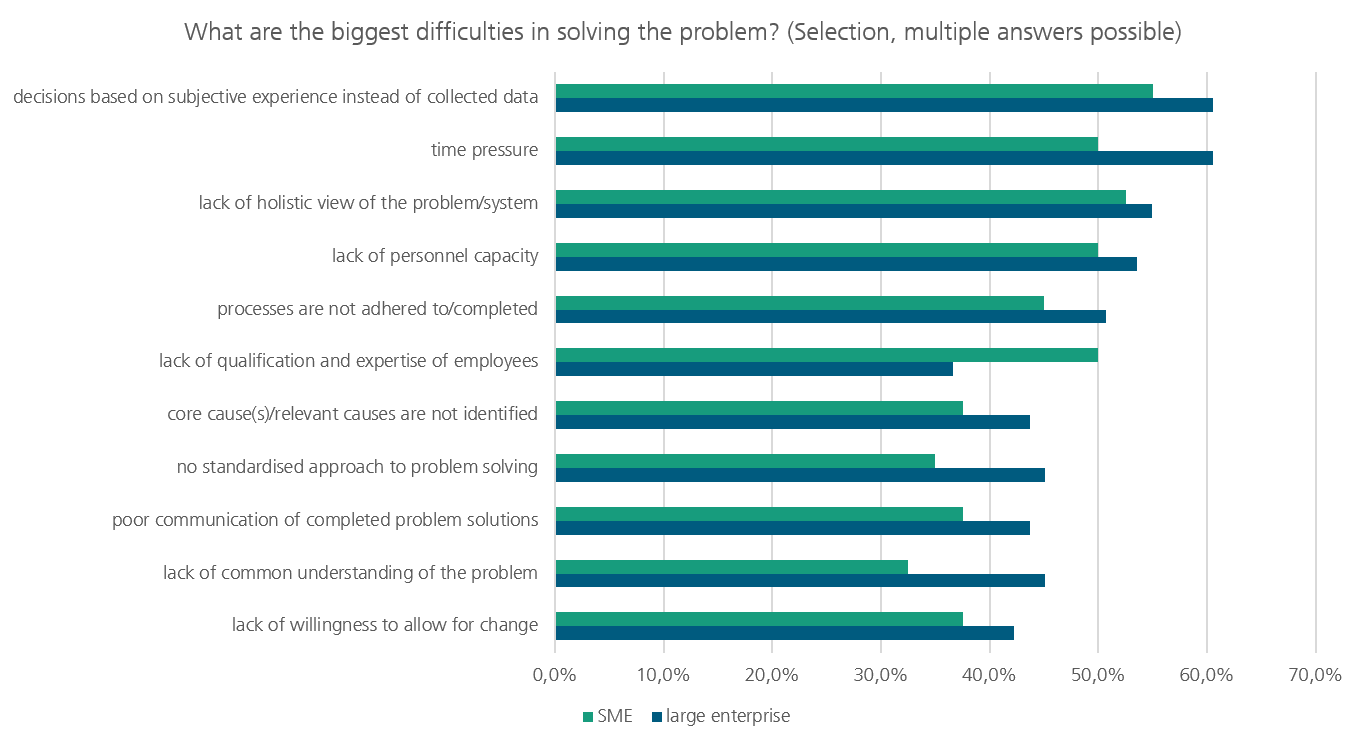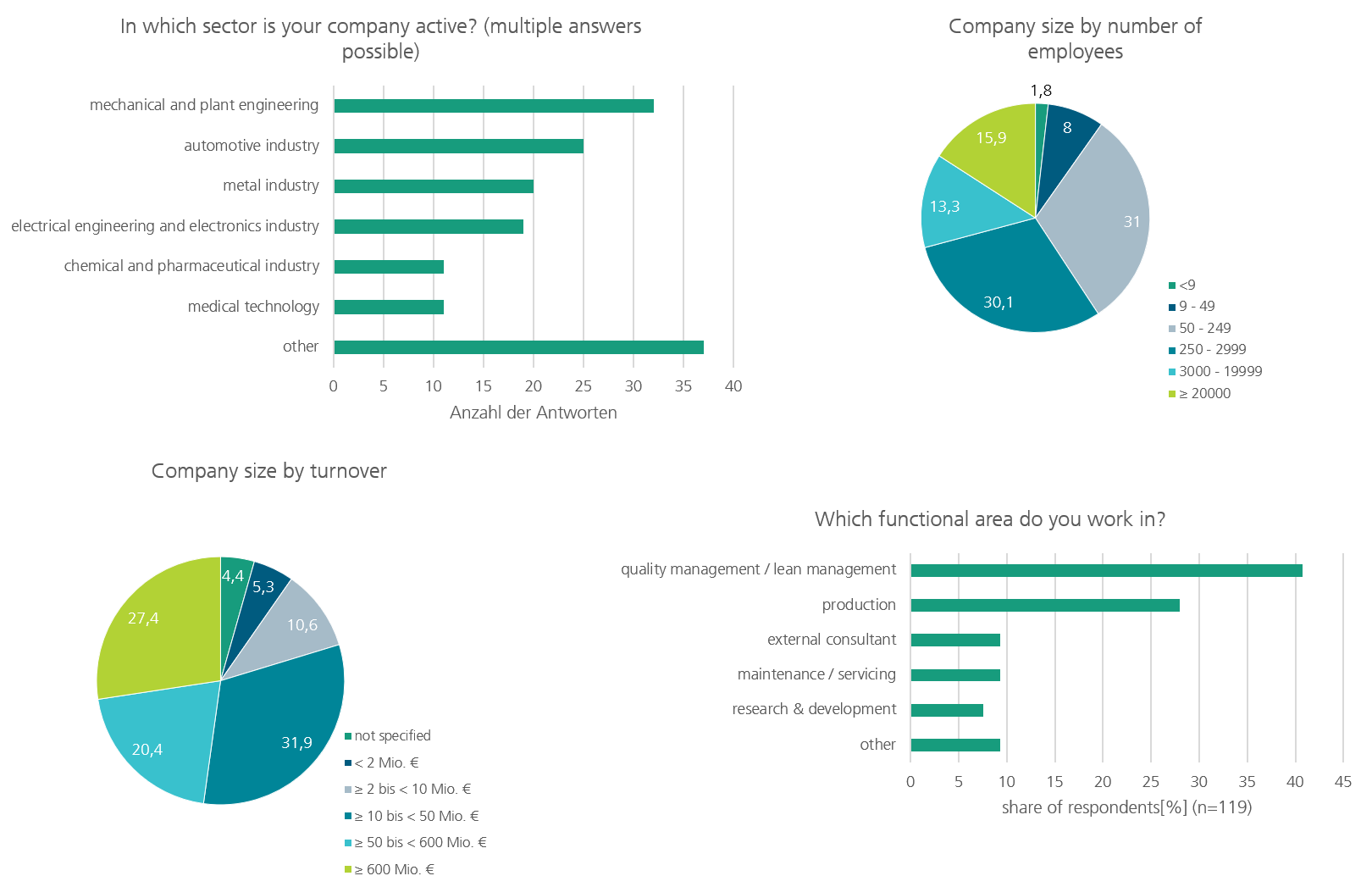How do companies implement systematic problem solving and what challenges arise in the process?
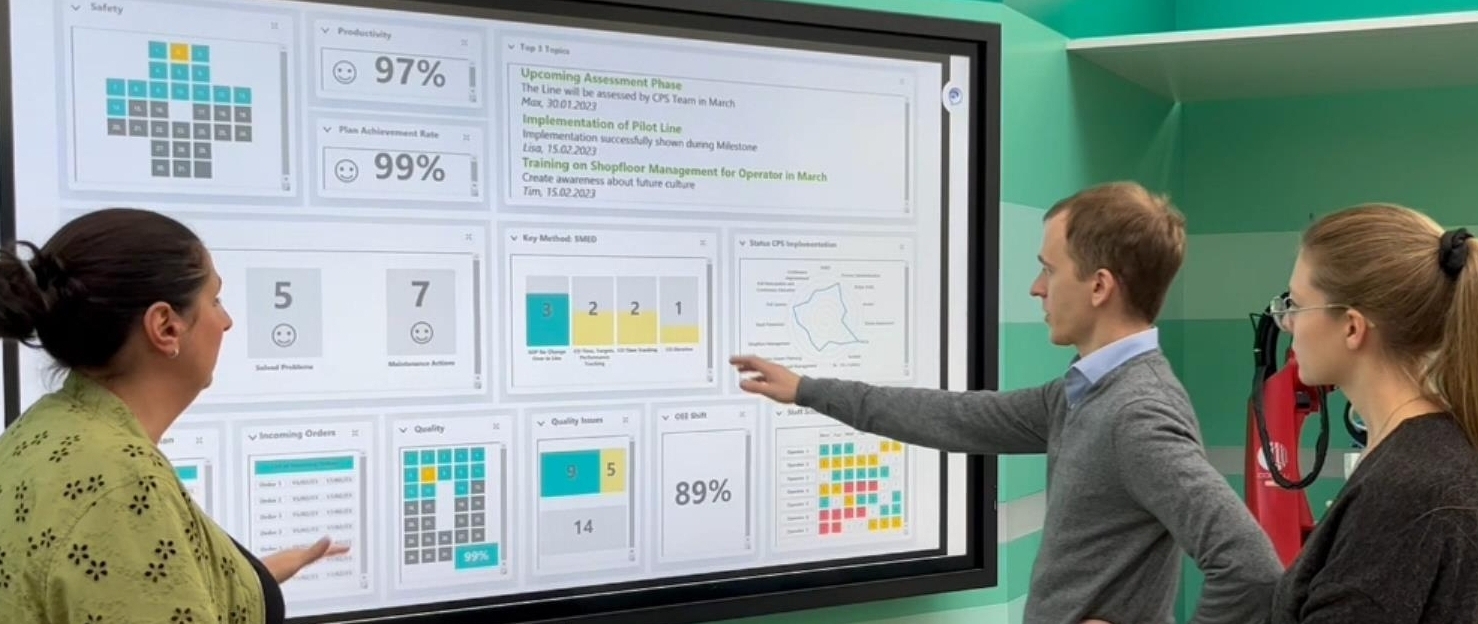
What are the ideal phases of systematic problem solving?
Phase 1: Problem description
Description: In the first phase of problem solving, the problem is clearly described and a team is formed, which should ideally be composed interdisciplinary. Depending on the problem, immediate measures are required to contain further effects. These immediate measures must by no means be the end of the problem-solving process, otherwise there will be constant fire-fighting, as problems are not consistently addressed at the root cause.
Input: Problem recognized
Output: Problem described, problem team convened, immediate action taken where necessary
Methods: A3, 8D
Tools: Is/Is not, 5W2H (Who? What? Where? When? Why? How, how much, how often, how long? What, where, who not?)
Phase 2: Root cause analysis
Description: In this phase, the team focuses on identifying the root cause of the problem. Only by eliminating this root cause can the problem be prevented from recurring. Creativity techniques within the team can be helpful here. The resulting ideas should then be put into cause-and-effect relationships, for example using an Ishikawa (or fishbone) diagram. The 5 Why method is also useful in that it repeatedly asks the question "why" in order to explore the underlying causes. The identified causes should be validated by testing. If the data are available, statistical methods can also be used.
Input: Problem described
Output: Root cause identified
Methods: A3, 8D
Tools: Brainstorming, 5-Why?, Ishikawa diagram, fault tree analysis, Is/Is not analysis, 6W / 5W2H, hypothesis test, TRIZ (theory of inventive problem solving)
Phase 3: Definition of measures
Description: Appropriate measures need to be defined for the identified causes. These should be discussed and agreed with all relevant parties to ensure broad agreement on implementation. In this problem-solving phase, various creativity techniques are used to generate ideas and proposals. Brainstorming is a widely used method for identifying and discussing solutions. The measures developed should be adopted with all stakeholders involved.
Input: Root cause identified
Output: Measures defined
Methods: A3, 8D
Tools: Brainstorming
Phase 4: Implementation and monitoring of measures
Description: In this phase, the previously defined solution measures are implemented and their effectiveness is monitored. The measures are structured, scheduled and responsibilities are defined. This is usually done using action plans or project management tools. The next step is to monitor the measures introduced and check their effectiveness.
Input: Measure defined
Output: Measure successfully implemented
Methods: A3, 8D
Tools: action plans, project portfolio
Phase 5: Knowledge transfer
Description: Once a measure has been successfully and sustainably implemented, it is important to document the knowledge gained and, if necessary, communicate it throughout the organization. The solution should be introduced as a new standard. By sharing and standardizing knowledge, it is possible to develop employees' problem-solving skills and ensure a continuous learning process within the organization.
Input: Measure successfully implemented
Output: Knowledge shared, results documented
Methods: A3, 8D
Tools: Lessons learned, exchange formats
How are the phases implemented in practice?
There is great potential for further improvement in the 'knowledge transfer' phase.
Assessment of the individual problem-solving phases reveals that the greatest challenges lie in knowledge transfer. Large companies in particular reported significant difficulties in this area. A frequently mentioned difficulty is the inadequate communication of successful problem solutions.
In order to improve knowledge transfer, the first step is to check whether it is firmly anchored in the problem-solving process. Is there a lessons learned session at the end of the problem solving process? How is information about successful problem solving shared? Are the records accessible to all employees and easy to search? Since knowledge transfer as the final phase in a problem solving process is often not visible in the actual result, the eliminated cause, it is often neglected for capacity reasons. Therefore: Is enough time planned for problem solving?
At the same time, knowledge transfer is seen as the phase in which digital solutions offer the greatest potential (see diagram). Once the basic aspects of knowledge transfer mentioned above have been defined, digital systems can be used to support it. Such a system can not only make information on previous solutions available as a file, but also index it through a search. This means that when a problem is identified, previous solutions can be automatically searched for best practices (see also digital solutions).
Need a problem-solving coach? Find out more about systematic problem solving here.
Companies that have not implemented lean systems rate their problem solving lower
Lean production systems offer advantages such as reduced lead times and inventories as well as a positive impact on problem solving. Implementing such a system is a long-term and complex task that should not be undertaken on the basis of problem solving alone. If you are interested in implementing such a system, get in touch with us!
Methods and tools are used very little overall. This can be a sign of improvisation in the process, even if it is defined in many cases.
Methods such as A3, Six Sigma and Kepner Tregoe have a positive influence on certain phases of problem solving. This has also been shown for 5W2H and Is/is not. While some methods, such as Six Sigma, require a high level of expertise, others, such as simplified A3 problem solving, can be applied using standard instructions and templates, supported by short training sessions. We have prepared these methods for you and made them available for download:
We also offer company-specific training courses.
Digital assistants have great potential. Technologies such as big data analytics and artificial intelligence can support compliance and partially compensate for a lack of expertise. While commercial approaches already exist, the development of a comprehensive enterprise-specific assistant remains a research topic. Interested in a project on this exciting topic? Then get in touch with us! We look forward to developing innovative solutions with you.
What can be done to strengthen problem-solving processes in companies?
Subjective decisions are the biggest problem.
Consistently adhering to methods can significantly reduce the subjective influence on decisions. Employees can be trained to recognize and avoid subjective influences in the process. Managers should ensure that decisions are based on data and consistently demand this in proposals. Using a moderator in problem-solving workshops can help focus on objective data. Digital assistants can help by linking processes and decisions to data. For all this to work, however, the availability and quality of data must first be ensured.
Time pressure and a lack of capacity make it difficult to solve problems.
Adherence to defined processes helps to eliminate the root cause of problems and reduce the proportion of fire-fighting in the long term, freeing up capacity. Until this is achieved, fixed time slots for problem solving should be installed, for example in the context of shop floor management meetings. In large companies, delegating decision-making authority to lower hierarchical levels (if the appropriate expertise is available) can shorten communication channels and thus reduce the time required.
Problem solving often lacks a holistic view of the problem. There is no common understanding of the problem.
In order to avoid one-sided perspectives, interdisciplinary teams should be formed in the first phase or, if necessary, further expertise should be brought in. The organizational framework for this needs to be put in place. In practice, a team size of five to eight people has proved to be ideal.
Processes are often not adhered to. There is no consistent approach to problem solving.
An individual problem-solving process should be defined for the company. Digital assistants can ensure that processes are observed, as can a facilitator. Managers should be particularly disciplined and attentive to the process. KPIs should cover the whole process, not just the outcome.
SMEs in particular lack problem-solving skills.
For best learning results, training should be based on practical examples close to the organization. We offer on-the-job coaching to support all stages of problem solving and competence building.
The root cause is not identified.
This is often a consequence of the difficulties mentioned above. Consistent adherence to the process, implemented by trained people and supported by appropriate methods and tools, will improve root cause identification.
How did we obtain these results?
Study design
In our study, we used a mixed methods approach that included both quantitative and qualitative data collection. The quantitative research was executed by means of an online survey to review and present existing facts and findings from literature on the current situation in companies. Qualitative interviews with experts were then conducted to understand problem solving in more detail and to analyze it qualitatively.
The topics and questions for the online questionnaire and the interview guide were based on comprehensive literature analyses. Different scales were used to measure the responses, allowing the participants' assessments and evaluations to be recorded numerically. The collected data were processed and analyzed using statistical evaluation methods and visual presentation. The questionnaire was pre-tested before the actual survey. The invitation to participate was sent out online, with defined criteria such as number of employees, turnover and location in the DACH region. The survey was also advertised in trade magazines and on social media platforms.
The survey was conducted from 24 August 2021 to 12 November 2021. The expert interviews were conducted between 1 November 2021 and 7 December 2021 with a total of five people.
Demographic information about the sample
A total of 148 responses was started, some of which were left incomplete. In the end, 113 valid questionnaires were analyzed. The industrial distribution is shown in the diagram, where 'other' includes sectors such as construction, plastics, paper and printing, research and development, food, services, wood and furniture as well as aerospace. According to EU definition, 63% of the participating enterprises were large enterprises and 47% were SMEs. While participants from SMEs were predominantly from higher management levels, representatives from large enterprises tended to originate from lower management levels. Overall, the sample represents all relevant hierarchical levels of a company.
In addition to the quantitative online survey, qualitative, semi-structured, guided interviews were conducted with industry experts. The interviewees were selected on the basis of their expert knowledge of problem solving in manufacturing companies, which is usually acquired in a professional context. Criteria for the selection of experts were their affiliation to a manufacturing company and their involvement in decisions and actions relevant to problem solving. Two of the interview partners volunteered after the online survey, while three others were selected from the Fraunhofer IPK environment. The expert interviews were conducted exclusively with representatives of large companies.
 Fraunhofer Institute for Production Systems and Design Technology
Fraunhofer Institute for Production Systems and Design Technology
